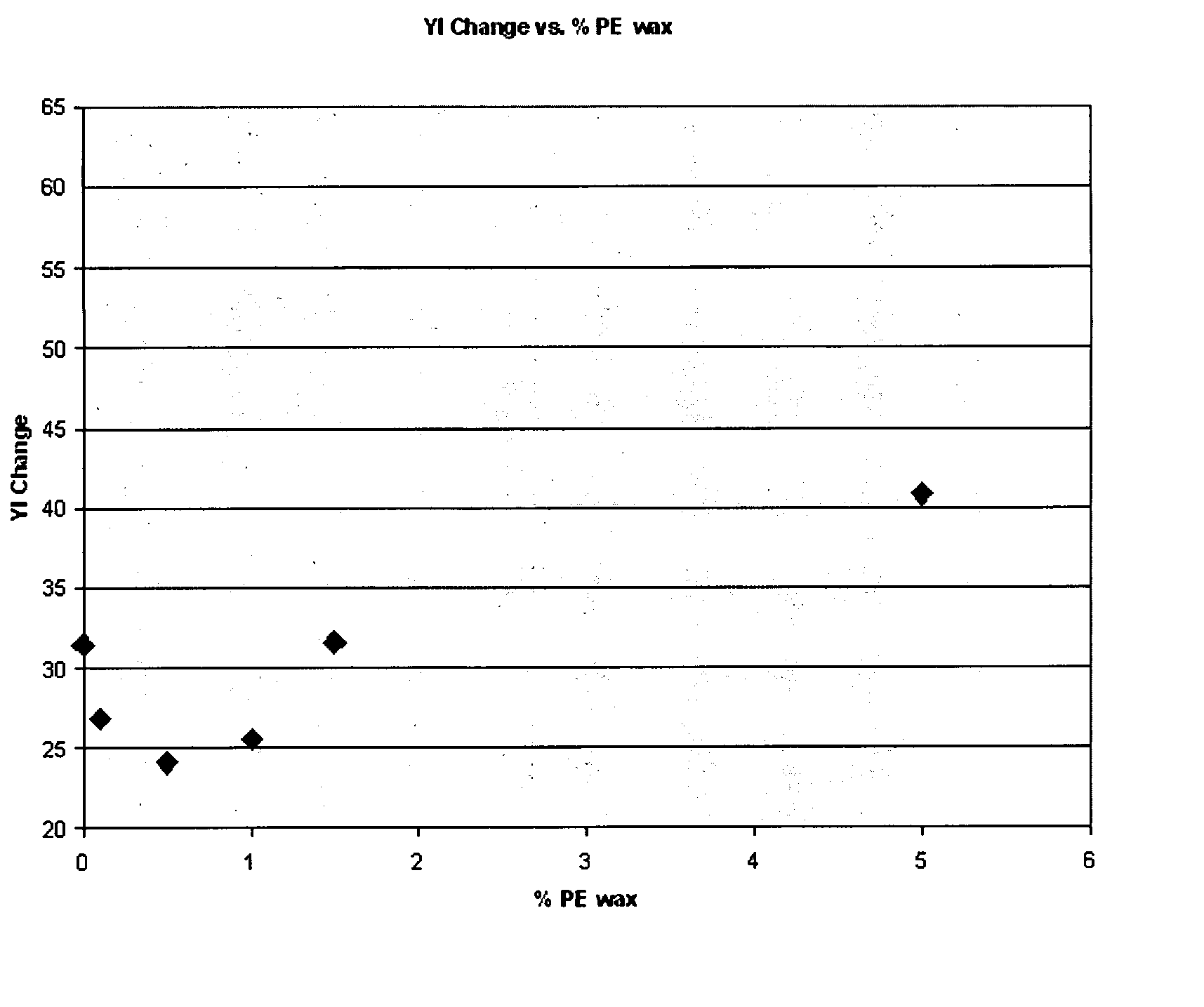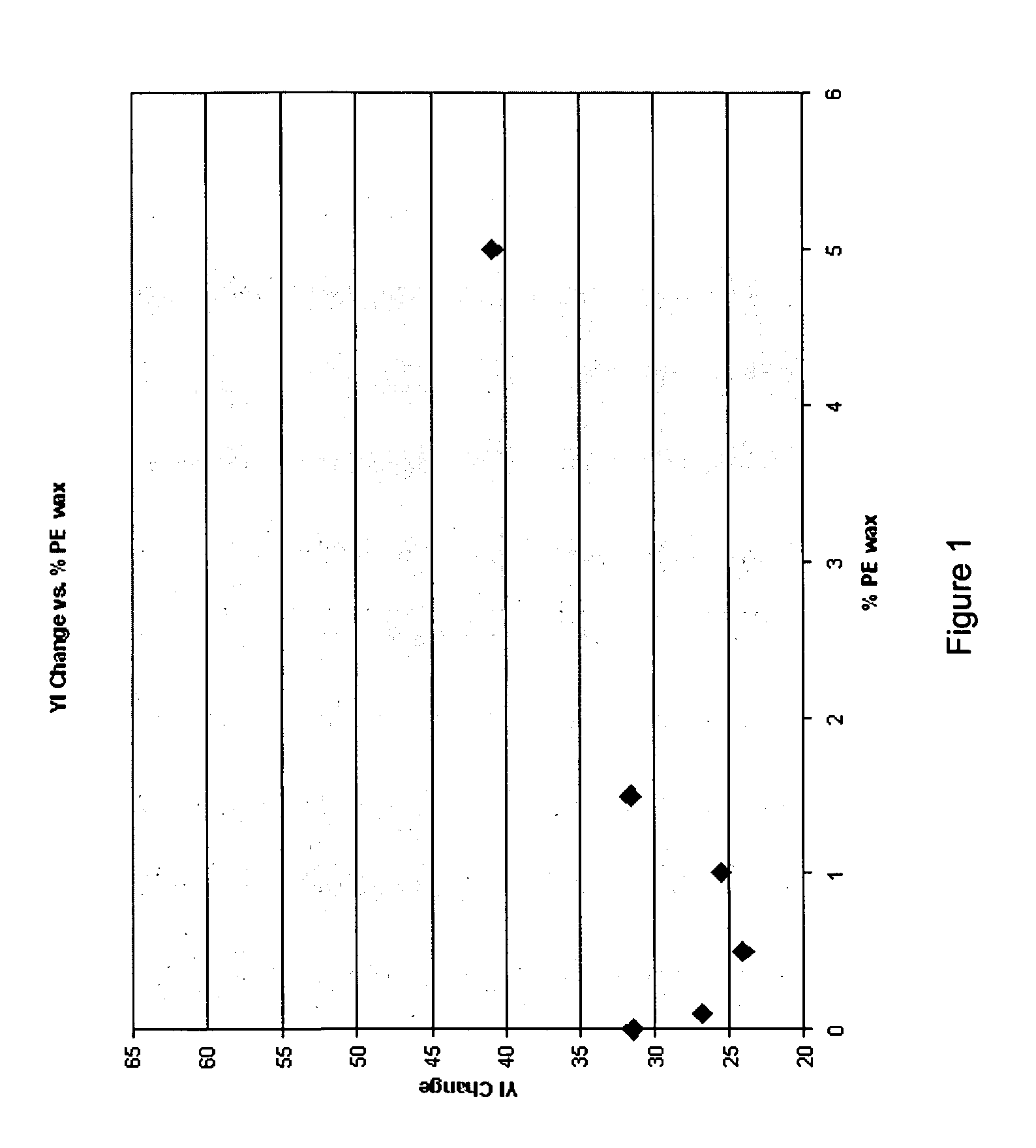Polyolefin resin and its use in films, coatings and food containers
a polyolefin resin and film technology, applied in the field of polyolefin resin, can solve the problems of non-metallic food containers manufactured, odor is only one potential problem, and metal containers such as aluminum trays do not efficiently cook foods in microwave ovens
- Summary
- Abstract
- Description
- Claims
- Application Information
AI Technical Summary
Problems solved by technology
Method used
Image
Examples
example 1
[0032] A resin is prepared using ATOFINA™ 3270, a high crystalline polypropylene (HCPP) homopolymer having a 2.0 ft / min melt flow rate. Portions of the HCPP homopolymer are compounded, using conventional methods, with varying amounts of a crystalline wax sold under the trade designation PE 3000 by BAKER PETROLITE™. The crystalline wax proportions range from 0 (a control and not an example of the invention) to about 5 weight percent based on weight of the homopolymer. The resulting compounded resins are tested for stain resistance to spaghetti sauce by first preparing experimental plaque-type samples having the dimensions×3.5 inches (8.9 cm)×1.5 inches (3.8 cm). The experimental samples are each suspended in RAGU® Chunky Garden Style spaghetti sauce with about 1.75 inches (4.4 cm) of each sample in contact with sauce. The samples and sauce are heated for about 7 minutes in a 1000 watt microwave oven, with the samples being rotated during the period of heating. The samples are removed...
PUM
| Property | Measurement | Unit |
|---|---|---|
| melting point | aaaaa | aaaaa |
| recrystallization temperature | aaaaa | aaaaa |
| melting point | aaaaa | aaaaa |
Abstract
Description
Claims
Application Information
 Login to View More
Login to View More - R&D
- Intellectual Property
- Life Sciences
- Materials
- Tech Scout
- Unparalleled Data Quality
- Higher Quality Content
- 60% Fewer Hallucinations
Browse by: Latest US Patents, China's latest patents, Technical Efficacy Thesaurus, Application Domain, Technology Topic, Popular Technical Reports.
© 2025 PatSnap. All rights reserved.Legal|Privacy policy|Modern Slavery Act Transparency Statement|Sitemap|About US| Contact US: help@patsnap.com


